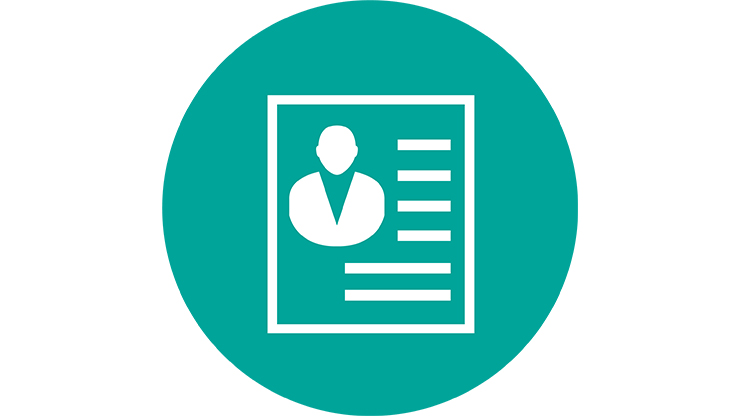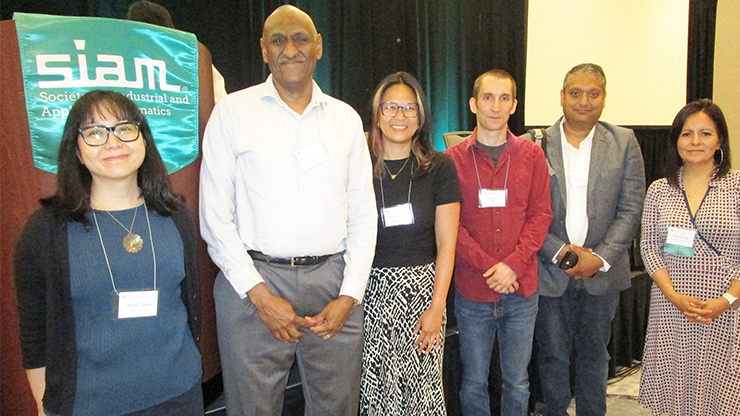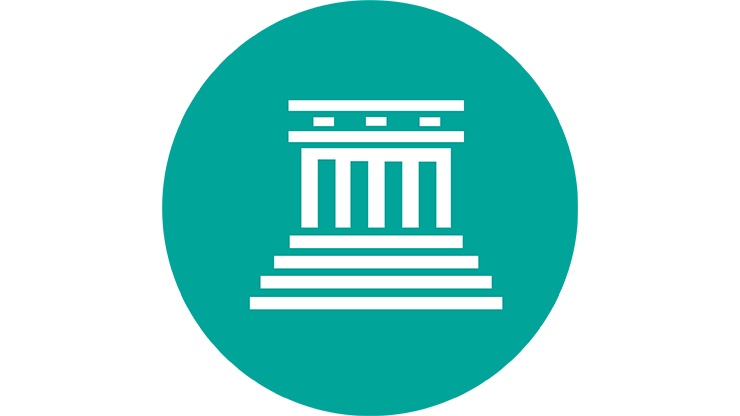Research in Biomathematics: A Guide to Funding from the U.S. Army Research Office
In recent years, mathematics has become a key aspect of life sciences and biomedicine research. As these fields continue to amass increasingly more data, the workforce will need to expand considerably to keep pace with the demand for mathematical modelers and data scientists in academia, industry, and government agencies. Academia plays a vital role in the life sciences for two reasons: It significantly contributes to basic research in biology and biomedicine, and it is a critical gateway to the mathematical biology workforce. As such, all faculty members must have access to research funding and support for their students. This need is especially urgent for faculty at institutions that lack extensive research support and infrastructure, as they often cannot access the services of experienced sponsored program offices and do not have colleagues with active awards who can help with grant applications. Furthermore, it is quite difficult to navigate the application requirements at U.S. federal agencies—such as the National Institutes of Health (NIH) and National Science Foundation (NSF)—without expert guidance.
Other grant programs—including many initiatives from foundations or professional societies—are typically easier to parse, though they generally do not accept unsolicited applications. One such federal program is the Army Research Office’s (ARO) Biomathematics Program under the direction of Virginia Pasour. The process begins with a conversation about a possible project with the relevant program officer. If the proposed project fits the program’s scope, then the officer encourages the researcher to apply. Applications are not confined by any specific or restrictive formatting guidelines. After reviewers provide their critiques, applicants can respond (much like journal submissions) and program officers work with them on their materials. This procedure is particularly helpful for inexperienced grant writers, who may stumble over grantsmanship issues despite the scientific soundness of their projects. Such protocols significantly improve the likelihood that faculty will secure funding for innovative projects and research endeavors — as does access to a mentor who has successfully obtained funding through the program in question.

With appropriate budgeting, funded projects can involve undergraduate students as research interns. Students who are exposed to biomathematics research are more inclined to consider a future career in this field, thereby expanding the workforce and providing the chance to welcome members of traditionally underrepresented communities. The existing structure of grant funding hence needs to (i) support faculty who conduct important biomathematics research and (ii) expand the participation of researchers from underrepresented groups by establishing a pipeline to graduate study in the field.
Thanks to financial support from ARO’s Biomathematics Program and organizational support from SIAM, we organized a workshop about ARO funding for biomathematics research at the 2024 SIAM Conference on the Life Sciences (LS24), which took place in Portland, Ore., this past June. Approximately 50 participants attended the presentations, panel discussions, and breakout groups that comprised the three-hour session. The ARO grant allowed us to offer financial support for 10 participants — many of them from historically Black colleges and universities, minority-serving institutions, and primarily undergraduate institutions (PUIs).
As director of the Biomathematics Program, Pasour kicked off the workshop with a detailed description of the program, its scope, and its scientific focus. One key area of interest is the fundamental laws of biology, which encompasses research on theoretical biology questions that might elucidate general principles in biological systems that can be formulated in mathematical terms. Proposals in this realm are expected to be high risk/high reward and do not necessarily require extensive preliminary work. Another area of emphasis is multiscale modeling in biology, which addresses the mathematical challenges of this approach and its applications. Pasour also described the different stages of the application process, after which workshop participants asked extensive questions. A breakout session at the end of the event provided another opportunity for attendees to interact with Pasour.
An essential resource throughout the grant application process is a stable support structure that helps faculty navigate the necessary pre- and post-award administrative tasks. As such, Della Philman (assistant director of the Sponsored Programs Office in the Department of Medicine at the University of Florida, an R1 institution) and Rodney Granec (executive director of the Office of Sponsored Programs, Research and Outreach at the University of West Alabama, a PUI) introduced workshop participants to the wide range of grant support at institutions of higher education. Both presenters listed the types of available resources for principal investigators across various institutions and outlined effective strategies for identifying and accessing assistance and mentorship during the entirety of the grant process. Their presentation slides are available on the workshop’s webpage.
Anyone who is applying for funding should be aware of grantsmanship: the skill of presenting a research project to reviewers in such a way that they can appreciate the significance, innovation, and appropriateness of the technical approach. Applicants should frame the project as a scientific “story” that connects these considerations and allows reviewers—who might be reading as many as a dozen proposals for any given program—to easily understand the project’s general approach and scientific context. Czerne Reid (a program director in the Department of Psychiatry and affiliate associate professor in the College of Journalism and Communications at the University of Florida), addressed this topic in the next workshop presentation. She taught attendees how to effectively present a scientific story for a general audience — whether in the form of a grant proposal, news article, or scientific manuscript.

To convey the firsthand experience of researchers who are looking for grant funding, Tongli Zhang (an associate professor in the Department of Pharmacology and Systems Physiology at the University of Cincinnati) spoke about his current grant from ARO’s Biomathematics Program for systems pharmacology work. He advised the audience to always seek mentorship and guidance from as broad a spectrum of individuals as possible. Luis Sordo Vieira (an assistant professor in the Department of Medicine at the University of Florida and co-author of this article), reinforced this message. After earning a Ph.D. in pure mathematics, Sordo Vieira transitioned to computational biomedicine and added an experimental component to his research program; he recently received a career development award from the NIH. He also urged attendees to ask themselves three questions before requesting funds for a specific project: Should it be done? Can it be done? And will it be done?
After a brief panel discussion and question-and-answer session with the speakers, Suzanne Weekes (chief executive officer of SIAM) delivered the final talk of the workshop. She described SIAM’s mission and overviewed its emphasis areas, activities, and programs that target education. At the event’s conclusion, speakers and participants led several breakout groups and proffered themselves as mentors for any faculty members who were preparing to submit a grant proposal.
Following the workshop, a highly informative LS24 panel discussion—which included Pasour as a panelist—featured program officers from the NSF, ARO, National Institute of Mental Health, and National Institute of General Medical Sciences. During the hour-long session, the officers outlined grant programs and other exciting happenings that focus broadly on the life sciences. For example, in addition to “regular” opportunities from NSF like the Division of Mathematical Sciences’ Mathematical Biology Program, new initiatives include two programs on digital twins — one of which is joint with NIH.
As the presenters emphasized, mentorship is of the utmost importance in the pursuit of funding opportunities. However, mentors are often difficult to find — especially for early-career researchers whose environments do not offer easy access to experienced faculty or extensive institutional resources. As a follow-up to the workshop, we intend to establish a “clearinghouse” for mentor/mentee contact information and have set up a mentoring sign-up feature on the workshop website that allows potential mentors to specify their expertise, interests, and the roles they are willing to undertake (from “one-time consultation” to “ongoing mentorship” and anything in between). This platform will permit researchers to describe their focus areas and mentoring needs, and we will provide advice to potential mentees and facilitate connections with interested parties. We encourage experienced researchers to sign up and help their early-career colleagues successfully establish their life sciences careers; this opportunity is open to anyone and is not limited to workshop participants.
About the Authors
Reinhard Laubenbacher
Director, Laboratory for Systems Medicine
Reinhard Laubenbacher is director of the Laboratory for Systems Medicine and a professor in the Department of Medicine’s Division of Pulmonary, Critical Care, and Sleep Medicine at the University of Florida. He is president-elect of the Society for Mathematical Biology.
Luis Sordo Vieira
Assistant professor, University of Florida
Luis Sordo Vieira is an assistant professor in the Department of Medicine’s Division of Pulmonary, Critical Care, and Sleep Medicine at the University of Florida.
Related Reading



Stay Up-to-Date with Email Alerts
Sign up for our monthly newsletter and emails about other topics of your choosing.



